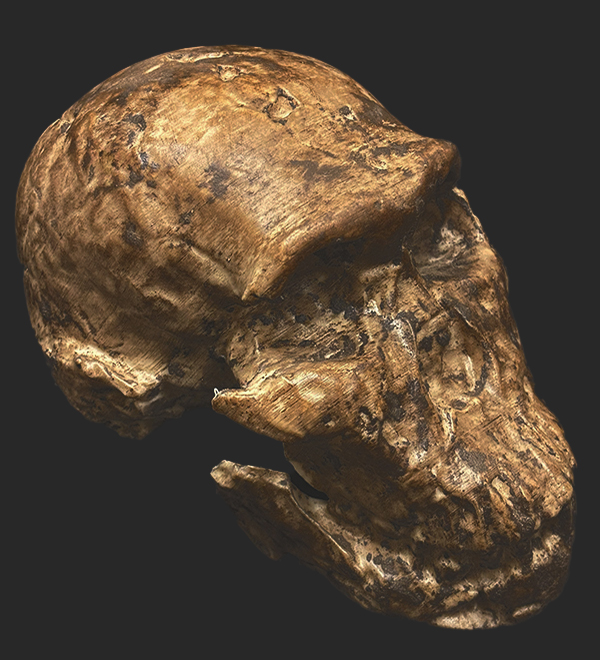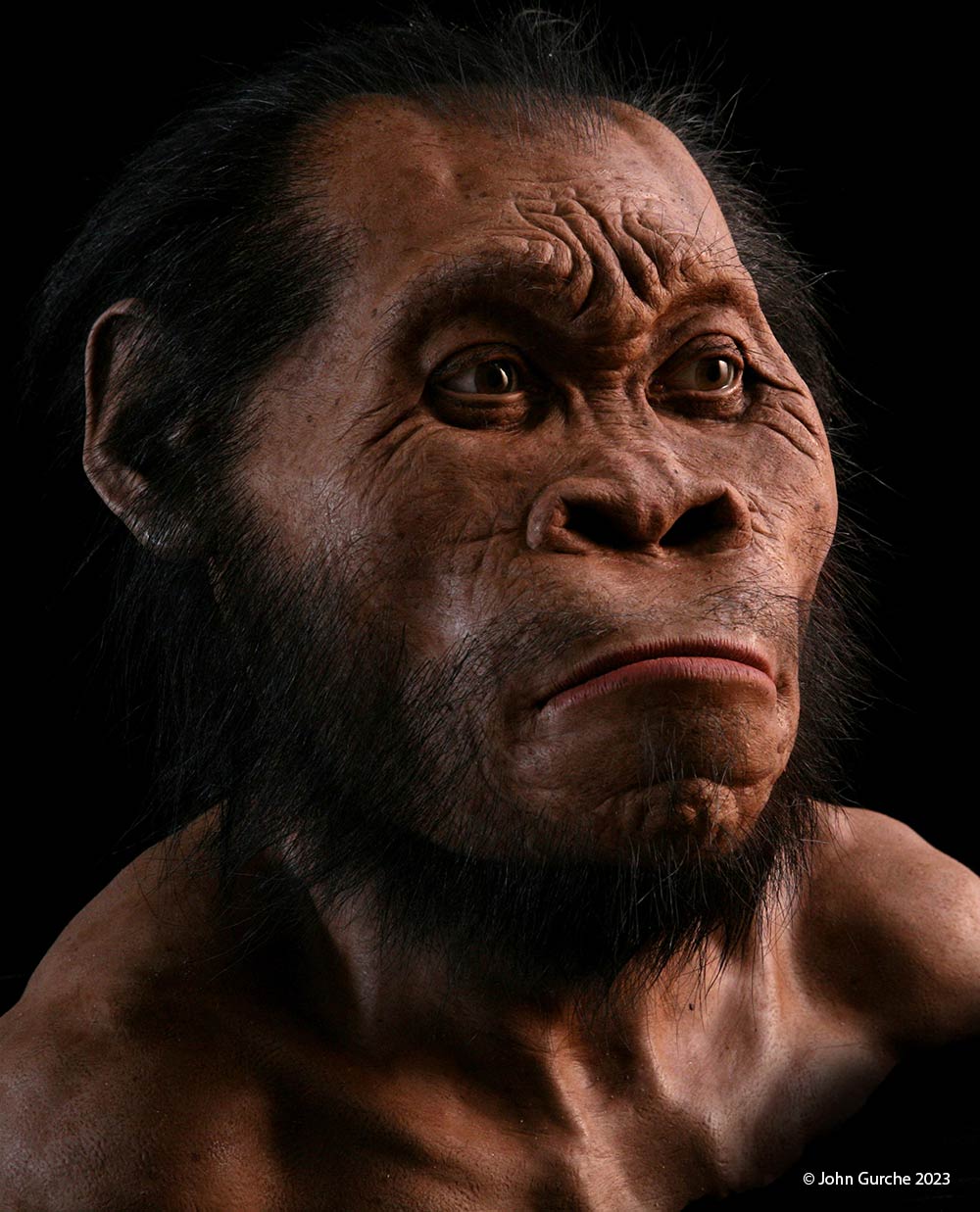Homo naledi
335,000 - 236,000 Years Ago


Homo naledi 3D printed from
MorphoSource file
The partially fossilized remains of at least 15 individuals of this species were recovered from the Rising Star cave system in South Africa beginning with bones discovered by Rick Hunter and Steven Tucker, recreational cavers, from the Dinaledi Cave during a 2013 reconnaissance expedition for palaeoanthropologist Lee Berger of the University of Witwatersrand, South Africa. Over the next two years 1550 bones, bone fragments, and teeth were recovered from the Dinaledi cave and the nearby Lesedi cave and include infant, juvenile, and adult specimens. They comprise the richest collection of associated fossil hominins ever discovered in Africa. Naledi means ‘star’ in the local Sotho language and refers to the main cave where the remains were found.
An almost completely intact skull was found along with multiple cranial caps and upper and lower jaw bones. Although the skull indicates a relatively small brain size of roughly 560 cc for males and 465 cc for females, it also suggests its brain shape and structure were that of modern humans. Overall, the skull of H. naledi is most similar to those of H. erectus and H. habilis. H. naledi is not considered in the direct ancestral line to modern humans and carries a unique mix of australopithecine and early Homo sp. traits. Unfortunately, attempts to extract intact DNA from these remains have failed.
Read more Australian Museum's Homo naledi
- Hominin Skulls - Select a Species
- Ardipithecus kadabba
- Ardipithecus ramidus
- Australopithecus afarensis
- Australopithecus africanus
- Australopithecus anamensis
- Australopithecus garhi
- Australopithecus sediba
- Denisovans
- Homo antecessor
- Homo erectus
- Homo floresiensis
- Homo habilis
- Homo heidelbergensis
- Homo naledi
- Homo neanderthalensis
- Homo rudolfensis
- Homo sapiens
- Kenyanthropus platyops
- Ororrin tugenensis
- Paranthropus aethiopicus
- Paranthropus boisei
- Paranthropus robustus
- Sahelanthropus tchadensis

